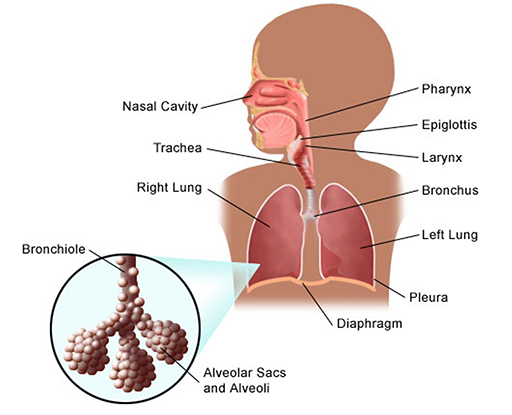1.2 Respiratory system
The respiratory system is made up of all the organs involved in the exchange of oxygen and carbon dioxide, but it has two parts.
The upper respiratory tract includes the nose, mouth, throat and sinuses (air filled spaces above and behind the nose). The lower respiratory tract is made up of the voice box (larynx), the windpipe (trachea), the airways (bronchi) and the lungs.
When you breathe in, you take in oxygen. In the lungs, oxygen is diffused into the blood and carbon dioxide diffuses out of the blood. This is called gas exchange. When you breathe out, you release the carbon dioxide. The oxygenated blood is carried to the heart to be pumped through the circulatory system.
When resting, adults and older children breathe about 12–20 times per minute. Toddlers breathe 20–30 times per minute and babies breathe 30–60 times a minute. That adds up to 17,000–30,000 breaths per day! When you exercise, even moderately, your breathing rate goes up.

